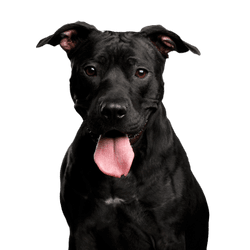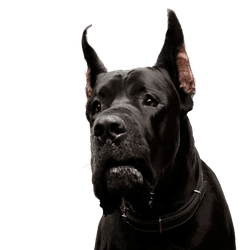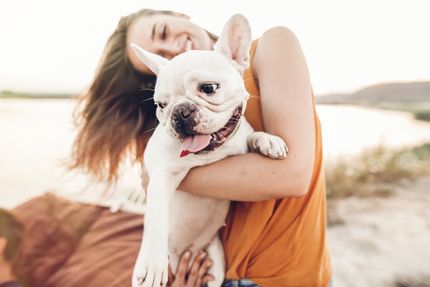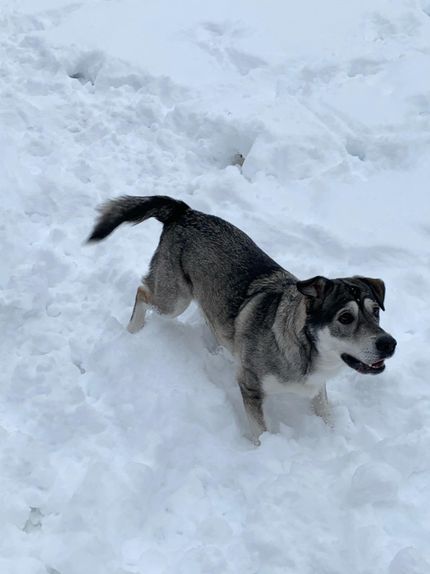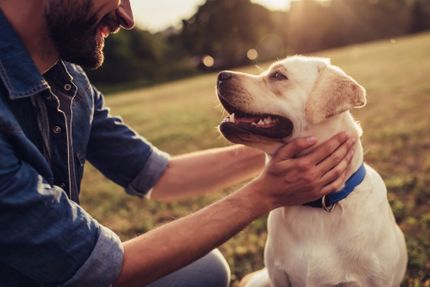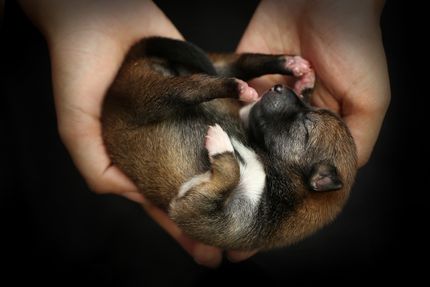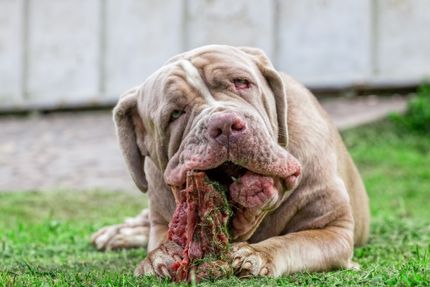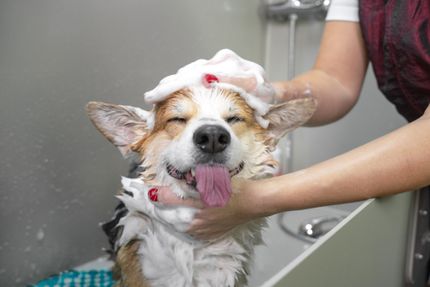Great Danebull:American Pit Bull Terrier and Great Dane Mix
Facts & Origin
American Pit Bull Terrier and Great Dane mix - a hybrid breed.
The American Pit Bull Terrier and Great Dane mix is a large, strong dog with lots of energy. They are loyal and loving, but can also be very headstrong and stubborn. This mixed breed is not for everyone, but if you are looking for a big, strong dog, the American Pit Bull Terrier and Great Dane mix could be the perfect dog for you.
What are breed characteristics of this mix dog?
The American Pit Bull Terrier Great Dane mix is a large, muscular dog with a short coat. They have a broad chest and a strong build. Their head is large and square with a short muzzle. The ears are medium sized and floppy. The eyes are brown or hazel. They have a long tail that is thick at the base and tapers to a point. They weigh 35-45 kg and are 70-90 cm long at the shoulder.
| Alternate Name | - |
| Origin | USA - Germany |
| Life expectancy | 8 - 12 years |
| Care requirements | low-maintenance |
| Activity level | average - high |
| FCI group | not recognised |
| AKC group | not recognised |
| KC group | not recognised |
More American Pit Bull Terrier mixes
More Great Dane mixes
Attitude, character and temperament of the breed
Possible character traits of American Pit Bull Terrier and Great Dane mix - Such is probably his nature.
The American Pit Bull Terrier and Great Dane are loyal and protective dogs that are good with children. They are intelligent and trainable, but can sometimes be headstrong and stubborn. This breed needs daily exercise and plenty of room to run and play. They are usually good with other dogs and animals, but can be territorial towards other dogs of the same sex. Owners* should be aware of the strength and power of this breed and be prepared to provide proper training and socialization.
Character
Usage


Health and breeding information
What diseases can occur in American Pit Bull Terrier and Great Dane mix.
The pit bull terrier and Great Dane mix is a popular dog in American families. Although they are known as loyal and loving companions, they are also prone to certain health problems. Here are some of the most common diseases that affect Pit Bull Terrier Great Dane mixes:
Hip Dysplasia: Hip dysplasia is a genetic abnormality of the hip joint. This can cause pain and lameness in affected dogs. Mixed breed dogs are particularly susceptible to this condition.
Elbow Dysplasia: Elbow dysplasia is another genetic maldevelopment of the elbow joint. This can also cause pain and lameness in affected dogs.
Bloat: Bloat can affect any dog, but is especially common in large dog breeds such as the pit bull terrier-granddog mix. Bloat occurs when the stomach fills with gas and then twists, trapping the gas in the stomach. This can be a very serious condition that can quickly lead to death if not treated immediately.
Heart Disease: Heart disease is a common cause of death in dogs, and the Pit Bull Terrier-Dog mix is no exception. The most common heart diseases that affect this breed include pulmonary stenosis and cardiomyopathy.
Cancer: Cancer is another common cause of death in dogs, and the Pit Bull Terrier Great Dane mix is unfortunately no stranger to this disease. The most common cancers that occur in this breed include lymphoma, osteosarcoma, and mast cell tumors.
While these health issues can be serious, it is important to remember that they are not necessarily indicative of the Pit Bull Terrier-Dog mix as a whole. These dogs can continue to be wonderful, loving companions for many years to come.
What does this mixed breed look like?
The American Pit Bull Terrier Great Dane mix is a large and powerful dog with a strong build. The coat is short and dense, with a smooth texture. The coloring is typically brindle or black and white. These dogs are loyal and affectionate, but can be headstrong and stubborn. They require consistent training and socialization from a young age.
| Fur length | short |
| Fur | flat coated |
| Ear shape | Tilt-ear - Floppy Ear |
| Tail | lang |
| Anatomy | muscular, square, slim, strong, sporty, square |
| Size ♀ | 43 - 86 cm |
| Weight ♀ | 14 - 59 kg |
| Size ♂ | 45 - 81 cm |
| Weight ♂ | 16 - 90 kg |
| Suitable For | - |
Known Diseases
dilated cardiomyopathy
Dilated cardiomyopathy is a disease of the heart muscle in which it becomes enlarged (dilated) and shows poor contraction (poor pumping ability).
Joint problems
Especially due to overweight, joint problems can occur in dogs.
Bone Cancer
May occur with age.
Cancer
May be common in older dogs.
Gastric torsion
Gastric torsion is a disease in which the stomach rotates around its own longitudinal axis. The cause of the disease is not known.
Ataxia
Ataxia (from Greek ἀταξία ataxia 'disorder' 'irregularity') is a generic term in medicine for various disorders of movement coordination. Ataxia can occur even when there is no paralysis (paresis), that is, when there is normal muscle strength.
FAQ
-
The average life expectancy of an American Pit Bull Terrier and Great Dane mix is 10 to 12 years.
-
Major health problems in an American Pit Bull Terrier and Great Dane include hip dysplasia, elbow dysplasia, and flatulence.
-
The ideal weight for an American Pit Bull Terrier and a Great Dane is between 35-45 kg and is 70-90 cm at the shoulder.
-
The coat of an American Pit Bull Terrier and Great Dane mix is usually short and stiff. The coat color is typically brindle, black or fawn.
-
An American Pit Bull Terrier and Great Dane mix needs a moderate amount of exercise. A daily walk or run is usually sufficient.
Useful Articles
You can find articles that might interest you in the dogbible blog to match your favorite breed.
Visit our magazineto stay up to date on dog trends.
To find out more, view our Privacy Policy
Find here the breed that suits you and find out what character traits it has. Here you can also learn more about the origin, size and weight of your favorite breeds.
Matching your favorite breed, you'll find articles that might interest you on the dogbible dog blog.
Herniated disc in dogs - Preventing and recognising disc problems
Chronic ear infection in dogs - what you can do
